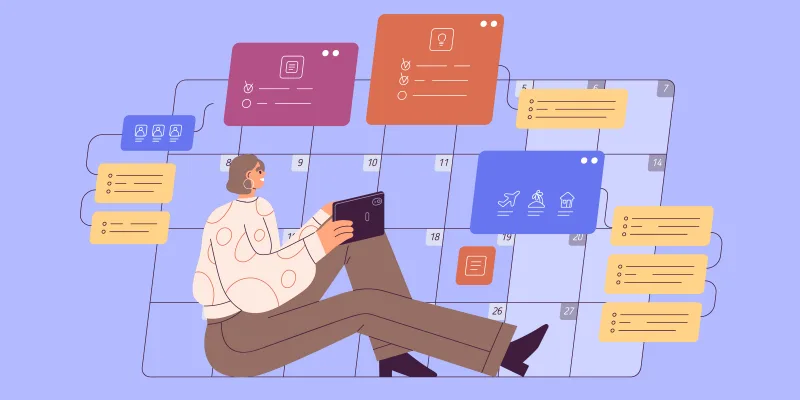One of the most overlooked parts of running a successful practice? The front desk. It’s easy to focus on surgical outcomes, clinical protocols, patient satisfaction scores, or the latest medical technology investments. But if your front desk is underwater, everything downstream suffers. And I mean everything. Patient flow becomes erratic, revenue cycles get disrupted, and staff morale plummets across the entire practice.
The Breaking Point
Jasmine, our office coordinator, was the glue holding everything together, but even the strongest glue cracks when you put too much pressure on it. She’d been with our practice for three years, always going above and beyond, but lately, she was staying late every single day. Her desk looked like a war zone — sticky notes everywhere, scattered appointment cards, printed emails that seemed to multiply overnight. She was fighting a losing battle against constant chaos: missed appointments, lost messages, scheduling conflicts, and patient communication breakdowns.
The situation had been getting worse for months, but we were all too busy putting out fires to deal with the real problems. Every day brought new headaches: patients showing up for appointments that weren’t in the system, important lab results that never made it to the right doctor, insurance authorizations that expired because nobody remembered to follow up.
Everything finally fell apart on a crazy busy Tuesday when we accidentally double-booked two of our most important VIP patients during the busiest part of the afternoon. Both patients had driven hours to see us, and both had completely rearranged their schedules for these appointments. I wanted to crawl under a rock, but more than that, I knew we had a serious problem on our hands.
I’ll never forget that moment because it changed everything about how we ran our practice. Jasmine walked into my office around 4:30 p.m., and I could tell she was at the end of her rope. She spread out this incredible mess of papers on my desk: dozens of sticky notes with conflicting information, email confirmations from different systems that didn’t match, a physical calendar that nobody had updated in weeks, and a digital scheduling system that never synced properly with anything else. It looked organized from a distance, but up close it was complete chaos. Honestly, I was shocked that we hadn’t had more disasters before this.
The Eye-Opening Audit
That night, I made a decision that completely transformed our practice. Instead of just hiring another person or slapping on another band-aid solution, I decided I needed to really understand what was happening at our front desk. So I did something I’d never done before: I cleared my entire schedule and spent four hours sitting right there at the front desk, watching everything, listening to every phone call, and seeing how information actually moved through our office.
What I saw blew my mind. Jasmine was juggling seven different browser tabs at the same time, switching between three different login systems, and keeping hand-written notes that had absolutely nothing to do with our computer systems. She was basically running a paper-based operation in a digital world, and the mental gymnastics she had to do were exhausting just to watch.
In those four hours, I watched her handle 47 phone calls, answer 23 emails, check in 12 patients, and try to sort out eight different scheduling problems. All while keeping a smile on her face and staying professional. She was switching between systems every minute and a half, and each time she had to stop, think, and figure out where to find the information she needed.
The moment that really got to me was when a patient called to reschedule, and I watched Jasmine check four different places before she could tell them what time their appointment actually was. This wasn’t just inefficient or frustrating. In health care, when communication breaks down, people can get hurt.
The Solution: Better Systems, Not More People
The answer hit me like a ton of bricks: We didn’t need more staff. We needed systems that actually worked. The problem wasn’t that Jasmine couldn’t do her job. She was incredibly good at it. The problem was that we’d created an impossible situation where even the best coordinator in the world would struggle.
Our first move was to get rid of all the different systems and put everything in one place. After looking at several options and sitting through way too many software demos, we picked a practice management platform that handled everything: texts, emails, voicemails, appointment reminders, scheduling, the whole nine yards. It took six weeks to get everything set up and train everyone, but the difference was immediate and incredible.
All of a sudden, messages stopped disappearing. Double-bookings became basically impossible because the system wouldn’t let you schedule two people at the same time. Patient communication got so much easier because everything was in one place. And Jasmine? She started leaving work on time. Actually, some days she even left early because she could finally get everything done.
Building Better Daily Routines
But technology was only half the battle. We also needed to create better daily routines that would keep us from sliding back into chaos. We started making a “daily rundown” document that gave everyone a bird’s eye view of what each day would look like: how many patients we expected, what kinds of appointments were scheduled, where we might hit bottlenecks, any special requests, and what follow-ups needed to happen.
Every morning, our front desk team started having quick 10-minute meetings where they’d go over the day’s schedule, talk about any potential problems, and figure out how to handle patient flow. Just 50 minutes a week, but it made a huge difference in how prepared everyone felt and how smoothly things ran.
We also started building in what we called “buffer time” between certain appointments, especially the complex procedures or patients who we knew might need extra attention. This stopped the domino effect where one appointment running long would mess up the rest of the day.
The Simple Change That Made the Biggest Difference
Here’s the thing that surprised me most: automated appointment reminders with links that let patients reschedule online. Sounds boring, right? But this one feature was a total game-changer. Before, when patients needed to reschedule, they’d call during our busiest times, creating more phone traffic and interrupting other work. Now they could reschedule themselves anytime, day or night, and everything updated automatically.
The results were better than we ever expected. Our no-show rate dropped 36% in just six weeks, and last-minute cancellations were cut almost in half. This had a ripple effect that improved everything: more predictable schedules, less stressed staff, steadier revenue, and happier patients.
We also added online check-in so patients could update their information, verify insurance, and fill out forms before they even got to the office. This reduced crowding in the waiting room and let our staff focus on more important things instead of basic data entry.
What Our Patients Actually Think
One of the smartest things we did was start asking patients about their front desk experience through quick, anonymous surveys. I was nervous about this at first because I didn’t want to put extra pressure on our team, but the feedback was incredibly helpful.
Patients notice everything. How friendly the voice sounds on the phone, how quickly they get checked in, how well their questions get answered, how professional the follow-up communications are. They even cared about our hold music (Who knew?). The comments helped us improve how we answered phones, what we said during greetings, and yes, we even got better hold music.
But here’s what really opened my eyes: Patients can absolutely tell the difference between a practice that has its act together and one that’s barely keeping its head above water. Front desk efficiency isn’t just an internal thing. It’s a huge part of how patients judge the entire practice.
How Everything Changed
The most amazing change wasn’t in our software or our processes. It was in our people. Once our team had tools that actually helped them instead of making their jobs harder, the whole vibe of our practice completely shifted. I started seeing real smiles at the front desk again, way fewer stress-related mistakes, and everyone seemed to take more pride in their work.
Jasmine, who just months before was ready to quit from burnout, became our biggest champion for the new systems. She started training other staff members and even suggesting new improvements. She went from barely surviving each day to actually enjoying her job again.
The positive effects spread throughout the whole practice. When the front desk ran smoothly, doctors could focus on taking care of patients instead of fixing administrative problems. Nurses spent less time hunting down missing information and more time on actual patient care. The whole team started working better together.
What I Learned
This whole experience taught me that real efficiency isn’t about doing things faster or checking more boxes. It’s about making things clear, consistent, and smooth for everyone involved. When your front desk works like it should, that good energy flows through your entire practice.
The front desk isn’t just where people schedule appointments. It’s the heart of your practice and the foundation of every patient’s experience. Every phone call, every appointment, every patient interaction starts there. When it’s working well, patients feel taken care of and confident in your practice. When it’s not, everyone feels the stress.
My Advice to You
If you want to make your practice run better, don’t start with clinical protocols, fancy new equipment, or reorganizing your staff. Start with your front desk. Clear your calendar, sit in that chair, and really watch what happens. Listen to the phone calls, observe the workflow, and pay attention to all the little frustrations that add up throughout the day.
You’ll be amazed by what you discover, and more importantly, you’ll finally understand what needs to be fixed. Investing in your front desk operations isn’t just about making things run smoother. It’s about building a foundation that supports everything else you’re trying to accomplish and ensures that every patient has a great experience from the moment they first contact your practice.
What front desk changes made the biggest difference in your practice? Share in the comments.
Dr. Shitel Patel is a renowned plastic surgeon at Lift Plastic Surgery and the visionary CEO of Ad Vital Software, a company revolutionizing the delivery of health care with technology. His passion for improving patient outcomes and streamlining health care processes is evident in his professional accomplishments, which can be explored further on his LinkedIn and Instagram profiles and podcast.
Image by GoodStudio / Shutterstock







